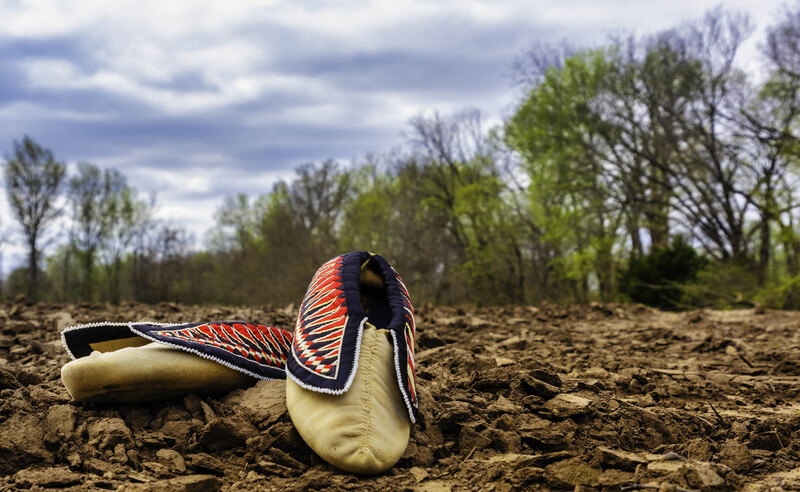A Brief Overview: Before, During, and After the Forced Removal
Photo by Doug Peconge
mihtami myaamiaki nipinkonci saakaciweeciki
"At first the Miamis came out of the water"
These words mark the beginning of the very first Myaamia story, describing their emergence as a distinct people onto Myaamionki (the Place of the Miami), their traditional homelands. Based on cultural clues, it seems as though the Myaamia people initially came from north of the Great Lakes, where they split off from a related group, and travelled south to Lake Michigan. From this story we learn that the Myaamia built their first village at Saakiiweeyonki and then some time later they left. Other stories describe the settlement of then numerous other villages in the Wabash River Valley. The emergence story concludes with a Myaamia man making a return journey to Saakiiweeyonki, where he finds other people there, speaking the same language. This story establishes the Myaamia roots in Myaamionki, stresses the importance of language in their group identity, and is oftentimes the source of many contemporary Myaamia people’s given names.
The lives of the Myaamia people in their homelands, to which their identity is intrinsically linked, shifted dramatically in the generations following the first contact with the Europeans and the birth of the United States. Over the centuries, they have been subject to innumerable hardships at the hands of the U.S. government: disease, violence, removal to unknown lands, forced cultural assimilation, and more. In 1846, over half of the 600 or so surviving Myaamia were forcibly removed from their homelands and settled west of the Mississippi in Indian Territory (present day Kansas). As the Myaamiaki worked to transform this new place into Myaamionki, settlers in the 1860s and 70s began to pressure them once again to leave their homes and many were forced to move to new lands in the south of Indian territory (current-day Oklahoma). There, they found themselves living with the Quapaw and Osage, as well as next to other tribes originally from the Great Lakes region: the Wyandot, Peoria, Ottawa, Seneca-Cayuga, and Shawnee. Each move during this forced relocation tore the fabric of Myaamia community life apart, leaving lives and families shattered in their wake, the effects of which the Miami Nation is still grappling with today.
Northeastern Oklahoma is now the seat of the sovereign nation of the Miami Tribe of Oklahoma, though all the lands where the Miami have lived over time are still referred to as Myaamionki, and the Nation numbers over 6,000 citizens. The Nation is a strong, vibrant community with a shared common history contributing to their cultural heritage. They have built a National land base that includes land holdings in five states, provide employment for Tribal citizens, language and cultural education programs, and scholarships, all due to the economic development efforts of the Nation directed by Tribal Leadership. Additionally, in direct partnership between the Miami Tribe of Oklahoma and Miami University, the Myaamia Center was created in 2001. The Center serves the needs of these two partners, as well as other communities, through research, education, and outreach that promote Myaamia language, culture, knowledge, and values.
The Miami Tribe of Oklahoma continues to work to “assure that while the sun continues to rise it will shine on the people known as myaamiaki”.

